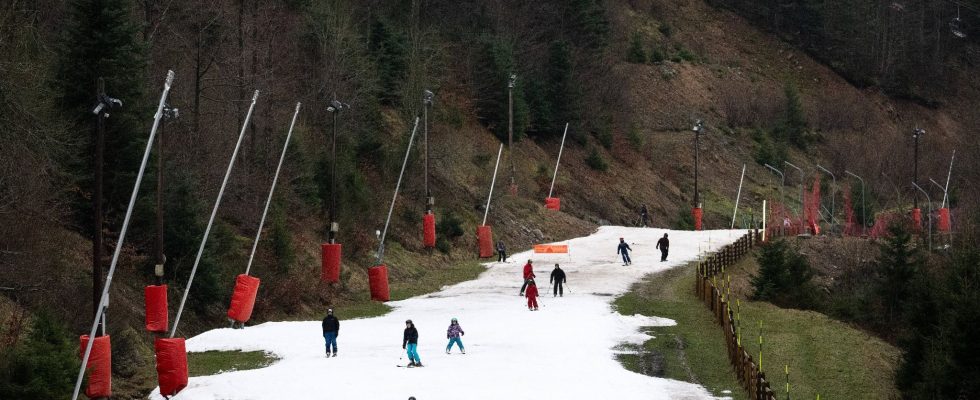This is a sad climate record. With an average temperature 3.6 degrees higher than normal for the period 1991-2020, February 2024 is the second hottest February on record behind 1990 (+4°C). This is also the 25th month in a row not to fall below normal. After a record autumn in terms of mildness, the winter of 2023-2024 ranks 3rd among the warmest winters ever measured in France and ends with an excessively mild month of February, close to the 1990 record, it was also announced this Thursday, February 29 Météo-France.
Over the entire meteorological winter, which covers the months of December, January and February and which is traditionally the coldest period of the year, the mercury should exceed seasonal norms by “around two degrees”, behind the winters of 2020 (+2.3°C) and 2016 (+2.1°C). These figures are all the more notable since current normals are calculated from temperatures of the previous three decades, themselves already warmer than the climate of the pre-industrial era.
An established softness
“After a winter episode from January 8 to 20, mild weather settled over France with temperatures worthy of the spring period,” notes Météo-France in a press release. And since February 2022, all months have been above normal, except April 2023, which was just within normal. For Météo-France, this “rise in temperatures, a consequence of climate change, leads to a shortening of the winter season: our winters are less cold than before, lasting frosts and snow in the plains are becoming increasingly rare”.
Unlike last year, the winter of 2023-2024, however, saw an excess of rain of around 10%. Relatively good news for groundwater, whose situation nevertheless remains precarious, after long months of almost uninterrupted drought, particularly in certain departments such as the Pyrénées-Orientales. Snow cover, which also contributes to supplying the aquifers and watercourses at the time of the spring melt, on the other hand remains in deficit or almost zero in low and medium mountains (Vosges, Jura, Massif central, Corsica and Pyrenees) on much of the winter.
Finally, despite unseasonably high temperatures, winter 2023-2024 was also marked by a lack of sunshine over a large part of the country. “The deficit reached 10 to 30% from the Center-West to the Paris Basin and the Ardennes,” notes Météo-France. Only the Mediterranean regions and certain areas of southern Alsace experienced sunshine consistent with the season.
